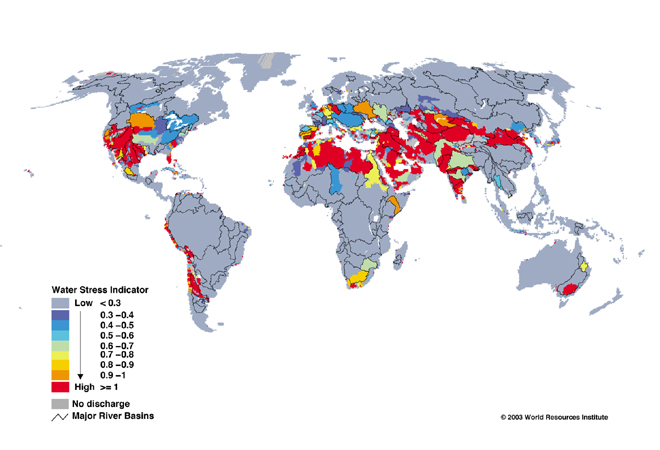Today is World Water Day
Published on March 22nd, 2014
 As I begin Day 6 of suffering through some miserable spring cold-sinus-head thing that’s got me headache-y, ache-y overall and feverish – and am working to form some relevant thoughts connecting World Water Day to what we do here at CAPS – I can’t help thinking how many of us in the Western World take water for granted.
As I begin Day 6 of suffering through some miserable spring cold-sinus-head thing that’s got me headache-y, ache-y overall and feverish – and am working to form some relevant thoughts connecting World Water Day to what we do here at CAPS – I can’t help thinking how many of us in the Western World take water for granted.
A temperature periodically running a couple of degrees above normal makes me lethargic and a wee bit dramatic. So I find myself overly thankful for being able to turn on the water tap to wet a cloth and cool my feverish head, fill a teakettle to brew a pot of tea – one of the few beverages that has any appeal right now – and simply step under the shower head to get some relief from feeling just plain yucky.
But this easy access to plentiful, clean water we accept as a standard is not the reality for hundreds of millions of people globally.
Here are a few facts and stats about the state of water around the world:
- Water pollution is on the rise globally.

- Of the 3 BILLION PEOPLE to be added to the population by 2050, 90 percent will live in regions that even now are experiencing water stress and have no sustainable access to drinking water.
- 2.5 BILLION PEOPLE don’t have access to basic sanitation.
- 768 MILLION PEOPLE have no access to improved water sources.
- As many as 140 million people in 70 countries on all continents have drinking water polluted by natural arsenic.
- Declining water resources already affect many areas of the world, and 20 percent of all aquifers are thought to be overexploited.
- Aggressive growth is leading to extracting water faster than it can be replaced in China, by 25 percent; India, 56 percent.
- Nearly 10 percent of global disease could be prevented with improved water supplies, sanitation and hygiene, and better water resources management.
 Free-flowing tap water at the Fotopoulos household notwithstanding, the U.S. has to address more and more water challenges.
Free-flowing tap water at the Fotopoulos household notwithstanding, the U.S. has to address more and more water challenges.
Obviously, California is much in the news now with the current record-breaking drought, and stories of farmers having to fallow fields for lack of water and more than a dozen towns potentially running dry. How we will balance competing needs for water – agricultural use, energy production, individual needs – in a state that is expected to add 13 MILLION PEOPLE by 2050 is a big question mark.
But California is not the only state with water problems. At the start of this year, West Virginia residents in nine counties had their water supply contaminated when a chemical used to wash coal leaked into an area river. The next month, in the same region, 100,000 gallons of coal slurry damaged six miles of a local creek after a pipe burst. Two months after the first spill, residents still are unable to drink the tap water.
Under the Great Plains of the U.S. is the Ogallala Aquifer. It provides about 30 percent of the ground water used for irrigation in the country and also drinking water for several million people. Parts of the aquifer now are empty, and water depletion is accelerating. It’s estimated that it would take 100,000 years to replenish the aquifer through rainfall. The current natural recharge rate is very slow, and it’s believed that much of Ogallala Aquifer’s water was from the last ice age.
Those are just a few examples of water challenges globally and here in the U.S., but enough to give us pause on World Water Day. One takeaway should be that none of these challenges will be made better by continuing to grow our population. Working towards a sustainable, and ultimately lower, population must be a global goal.




